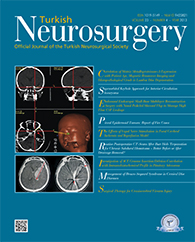Material and Methods: Data from 56 patients with craniocerebral firearm injury were analyzed retrospectively for projectile types, traumatic conditions, and treatment approaches.
Results: 43 patients exhibited intracranial foreign body residence. Of them, 40 were subjected to complete foreign body removal and 2 to partial removal, leaving 1 without receiving removal treatment. 54 patients (96.4%) survived and 2 (3.6%) died. Of the survivors, 36 (64.3%) recovered well, 15 (26.8%) were moderately disabled, 2 (3.6%) were severely disabled, and 1 (1.8%) lapsed into vegetative state. Patients receiving debridement within 8 h after injury had a significantly higher recovery rate than those receiving such treatment after 8 h (82.1% vs. 26.7%; P < 0.001).
Conclusion: Craniocerebral firearm injury is characterized by rapid traumatic condition development as well as serious trauma and contamination. Accurately judging the traumatic condition and the ballistic tract, performing complete debridement as early as possible, reasonably deciding on the operative mode and approach for intracranial residing foreign body removal, and increasing vigilance regarding concomitant injuries are the keys to the improvement of the overall treatment of craniocerebral firearm injury.
Keywords : Craniocerebral injury, Firearm injury, Surgery




